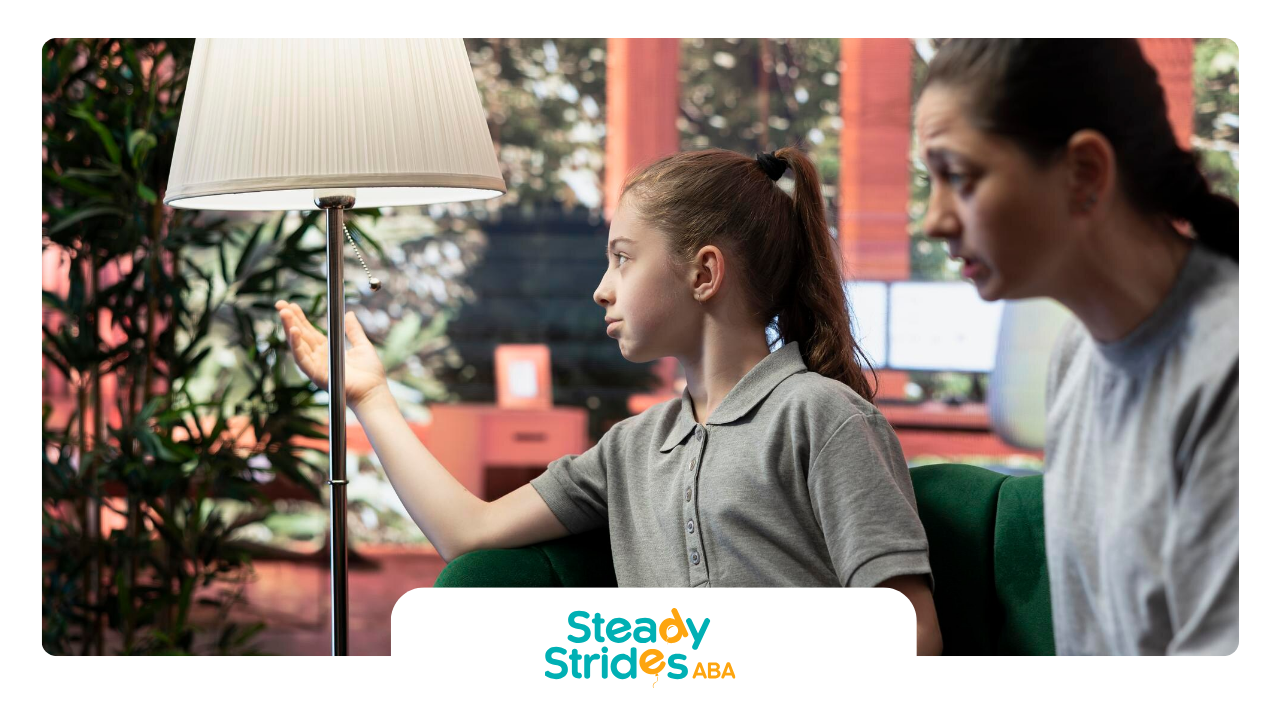Disciplining any child can be challenging, but when your child is on the autism spectrum, those challenges often come with added layers of complexity. Children with autism may have difficulty understanding social cues, struggle with emotional regulation, and experience sensory sensitivities that influence behavior. This means that traditional discipline strategies may not always work—and in some cases, they may do more harm than good.
Understanding how to parent and discipline a child with autism is crucial for fostering a safe, structured, and supportive environment where they can thrive. In this blog, we'll explore what discipline means in the context of autism, strategies that promote positive behavior, common pitfalls to avoid, and how to tailor your approach to meet your child's unique needs.
What Does Discipline Really Mean?
Discipline is often misunderstood as punishment. But true discipline is about teaching, not punishing. It’s about helping your child learn appropriate behaviors and develop self-control over time. For children with autism, this involves:
- Building trust and safety
- Teaching clear expectations
- Reinforcing positive behaviors
- Redirecting unwanted behaviors
- Offering consistent consequences
It’s also important to consider that some behaviors seen in autistic children—like meltdowns, noncompliance, or repetitive actions—aren’t intentional misbehavior. They can be signs of sensory overload, anxiety, or difficulty communicating.
Why Discipline Strategies Need to Be Different for Autistic Children
Many children with autism process information differently. They may not understand cause and effect in the same way neurotypical children do, and they may not respond to typical consequences like timeouts or reprimands.
Key reasons why a different approach is needed include:
- Sensory challenges: Loud scolding or abrupt changes in routine can worsen behavior.
- Communication difficulties: Your child may not understand verbal explanations.
- Cognitive differences: Abstract reasoning or delayed gratification can be hard to grasp.
- Rigid thinking: Transitions or unexpected rules may trigger anxiety or defiance.
Tailoring your discipline methods to account for these factors will help reduce frustration and increase effectiveness.
Step-by-Step Guide: How to Discipline a Child with Autism
1. Understand the Behavior First
Before reacting to a behavior, ask yourself: What is causing this? Many challenging behaviors are a form of communication. Your child might be trying to tell you they’re overwhelmed, tired, anxious, or confused.
- Is the environment too noisy?
- Are they trying to escape a non-preferred task?
- Are they frustrated because they can't express what they want?
Functional Behavior Assessments (FBAs) are often used to identify the “why” behind a behavior, which can help you respond more effectively.
2. Set Clear and Consistent Expectations
Children with autism thrive on routine, structure, and predictability. Setting clear rules and reinforcing them consistently will help your child feel secure and understand what is expected.
- Use visual aids or social stories to explain rules.
- Keep language simple and concrete.
- Use first/then statements: “First brush teeth, then we read a book.”
Consistency across all environments (home, school, therapy) is key to success.
3. Use Positive Reinforcement
Positive reinforcement is one of the most powerful tools in your toolbox. It means rewarding desired behavior with something meaningful to the child.
Examples include:
- Verbal praise: “Great job using your words!”
- Token systems or sticker charts
- Access to a favorite toy or activity
Always be specific in your praise so the child knows what behavior is being reinforced.
4. Redirect Rather Than Punish
Instead of saying “No” or “Stop that,” try redirecting your child to a more appropriate activity.
For example:
- If your child is jumping on furniture, say: “Let’s jump on the trampoline instead.”
- If they’re yelling, model a quieter voice and offer a calming tool like a weighted blanket.
This strategy teaches your child what to do rather than simply what not to do.
5. Teach Coping and Communication Skills
Many meltdowns occur because the child lacks the tools to express themselves or manage emotions.
Help your child learn:
- Simple sign language or visual communication cards (PECs)
- Calming strategies like deep breathing, counting, or sensory tools
- Emotion labeling (e.g., “I see you’re feeling frustrated.”)
Practicing these skills outside of crisis moments is crucial for them to be effective when emotions run high.
6. Use Natural and Logical Consequences
Consequences should make sense to the child and be directly related to the behavior.
- If a child throws their toy, they lose access to the toy briefly.
- If they spill water on purpose, they help clean it up.
Avoid vague or delayed consequences that the child may not associate with their behavior.
7. Avoid Physical Punishment and Yelling
Physical punishment and yelling are not effective for children with autism. These approaches can:
- Increase anxiety and sensory overload
- Damage the trust between you and your child
- Lead to aggression or self-injury in response
Instead, focus on teaching, modeling, and supporting your child through difficult moments.
8. Use Visual Schedules and Timers
Transitions can be hard for autistic children. Use visual schedules to outline the day and prepare them for changes in routine.
Timers can also help with:
- Sharing turns
- Knowing when an activity is ending
- Managing breaks
These tools offer predictability and reduce the likelihood of meltdowns or defiance.
9. Remain Calm and Patient
Your child looks to you for cues on how to react. Staying calm in the face of challenging behavior models emotional regulation.
If needed, take a moment for yourself before addressing the behavior. Your calm presence is one of the most effective discipline tools you have.
10. Collaborate with Professionals
You’re not in this alone. A team of professionals—such as ABA therapists, occupational therapists, speech-language pathologists, and developmental pediatricians—can help you develop effective strategies tailored to your child’s needs.
They can also provide training and support so you feel confident implementing techniques at home.
Common Discipline Mistakes to Avoid
Even the most loving and well-intentioned parents can fall into these traps:
- Being inconsistent with rules and consequences
- Punishing behaviors that are actually sensory or communication-related
- Overusing "no" without teaching alternatives
- Expecting too much too soon
- Not adjusting expectations for developmental level
The goal is not perfection, but progress. Learn from mistakes, stay flexible, and keep moving forward.
Teaching Self-Discipline Over Time
As your child grows, the ultimate goal is to help them develop internal regulation—the ability to manage their behavior and emotions independently.
This will take time, and progress may not always be linear. Celebrate small victories and recognize that each step forward is a big accomplishment.
When to Seek Additional Help
If your child’s behaviors are escalating, becoming dangerous, or interfering with daily life, don’t hesitate to seek professional support. Behavior challenges are common among children with autism, and early intervention can lead to significant improvements in quality of life.
Supporting Your Journey
Disciplining a child with autism is not about control—it’s about connection, communication, and compassion. With patience, knowledge, and the right strategies, you can guide your child toward positive behavior while building a loving, trusting relationship.
At Steady Strides, we understand the challenges families face and are here to help. Our team provides evidence-based ABA therapy tailored to your child’s unique needs, empowering you with the tools to create a supportive and structured home environment. Reach out to us to learn how we can support your child’s growth and development.
Frequently Asked Questions
How do I discipline my autistic child without yelling or punishment?
Use calm, consistent strategies like positive reinforcement, redirection, and visual supports. Yelling and punishment can escalate behavior and increase anxiety. Instead, focus on teaching and modeling appropriate behavior.
What should I do when my autistic child has a meltdown?
Stay calm, reduce sensory input (dim lights, lower noise), and provide a safe space. Avoid trying to reason during the meltdown. Offer calming tools or just your quiet presence. Once your child is calm, you can discuss what happened.
Can ABA therapy help with behavior and discipline at home?
Yes, ABA therapy can be extremely helpful. It teaches children functional communication, emotional regulation, and appropriate behavior. ABA therapists can also train parents in effective strategies for home and daily life.
Sources:
- https://www.autism.org.uk/advice-and-guidance/topics/behaviour/meltdowns/all-audiences
- https://www.autismspeaks.org/sensory-issues
- https://www.cde.state.co.us/cdesped/ta_fba-bip
- https://www.autismparentingmagazine.com/autism-routine-importance/
- https://ed-psych.utah.edu/school-psych/_resources/documents/grants/autism-training-grant/Visual-Schedules-Practical-Guide-for-Families.pdf












